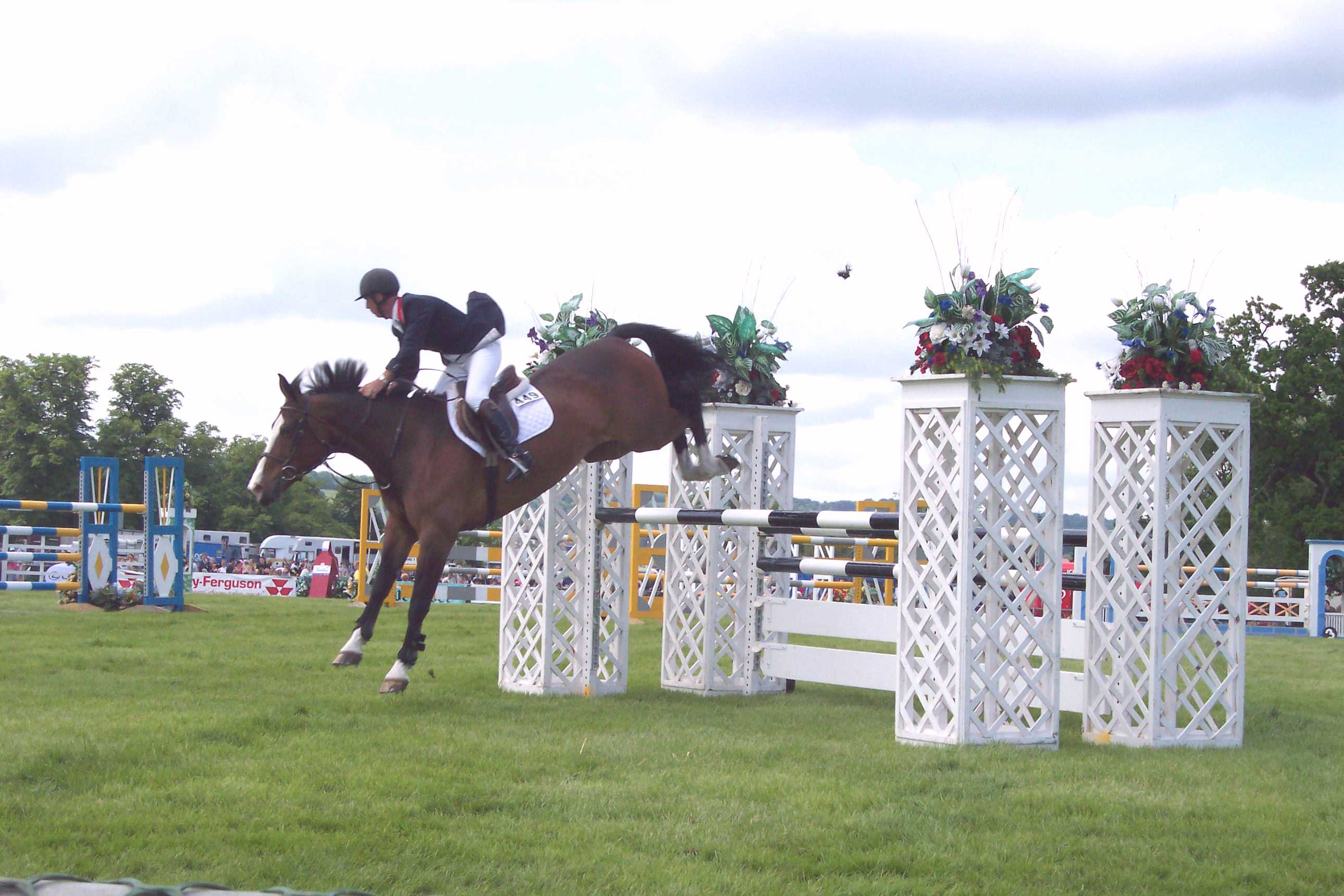Horse's Center Of Balance on:
[Wikipedia]
[Google]
[Amazon]
 In horsemanship, the center of balance of a
In horsemanship, the center of balance of a
 In horsemanship, the center of balance of a
In horsemanship, the center of balance of a horse
The horse (''Equus ferus caballus'') is a domesticated, one-toed, hoofed mammal. It belongs to the taxonomic family Equidae and is one of two extant subspecies of ''Equus ferus''. The horse has evolved over the past 45 to 55 mi ...
is a position on the horse's back
The human back, also called the dorsum (: dorsa), is the large posterior area of the human body, rising from the top of the buttocks to the back of the neck. It is the surface of the body opposite from the chest and the abdomen. The vertebral c ...
which correlates closely to the center of gravity
In physics, the center of mass of a distribution of mass in space (sometimes referred to as the barycenter or balance point) is the unique point at any given time where the weighted relative position of the distributed mass sums to zero. For ...
of the horse itself. The term may also refer to the horse's center of gravity.
For the best performance by the horse, as well as for better balance, the rider must be positioned over the center of balance of the horse. The location of the horse's center of balance depends on a combination of speed and degree of collection
Collection or Collections may refer to:
Computing
* Collection (abstract data type), the abstract concept of collections in computer science
* Collection (linking), the act of linkage editing in computing
* Garbage collection (computing), autom ...
. For a standing or quietly walking horse, it is slightly behind the heart girth and below the withers
Withers are the ridge between the shoulder blades of an animal, typically a quadruped. In many species, this ridge is the tallest point of the body. In horses and dogs, it is the standard place to measure the animal's height. In contrast, catt ...
. If a horse is moving at a trot
The trot is a two-beat diagonal horse gait where the diagonal pairs of legs move forward at the same time with a moment of suspension between each beat. It has a wide variation in possible speeds, but averages about . A very slow trot is som ...
or canter
The canter and gallop are variations on the fastest gait that can be performed by a horse or other equine. The canter is a controlled three-beat gait, while the gallop is a faster, four-beat variation of the same gait. It is a natural gait pos ...
, the center of balance shifts slightly forward, and it moves even more forward when the horse is galloping or jumping
Jumping or leaping is a form of locomotion or movement in which an organism or non-living (e.g., robotic) mechanical system propels itself through the air along a ballistic trajectory. Jumping can be distinguished from running, galloping and ...
. If a horse is highly collected, the center of balance will be further back, regardless of gait
Gait is the pattern of Motion (physics), movement of the limb (anatomy), limbs of animals, including Gait (human), humans, during Animal locomotion, locomotion over a solid substrate. Most animals use a variety of gaits, selecting gait based on s ...
, than if the horse is in an extended frame. For movements such as a rein back "Rein-back" is a dressage term to indicate the two-beat movement in which a horse is asked to back up. The horse picks up and sets down its feet almost in diagonal pairs, and moves straight backwards with the line of his forelegs following those of ...
or the levade, the center of balance of the horse and rider may be further back than at a standstill, due to the shift of weight and balance to the hindquarters of the horse
Accordingly, a saddle
A saddle is a supportive structure for a rider of an animal, fastened to an animal's back by a girth. The most common type is equestrian. However, specialized saddles have been created for oxen, camels and other animals.
It is not know ...
designed for a specific discipline will attempt to place a rider naturally at the most suitable position for the anticipated activity of the horse. For example, a "close contact" style of English saddle
English saddles are used to ride horses in English riding disciplines throughout the world. The discipline is not limited to England, the United Kingdom in general or other English-speaking countries. This style of saddle is used in all of the O ...
, designed for show jumping
Show jumping is a part of a group of English riding equestrian events that also includes eventing, hunters, and equitation. Jumping classes are commonly seen at horse shows throughout the world, including the Olympics. Sometimes shows ar ...
, places the rider's seat further forward than does a dressage
Dressage ( or ; , most commonly translated as "training") is a form of horse riding performed in exhibition and competition, as well as an art sometimes pursued solely for the sake of mastery. As an equestrianism, equestrian sport defined by th ...
style English saddle.
References
{{reflist Riding techniques and movements Balance (horse), Center of